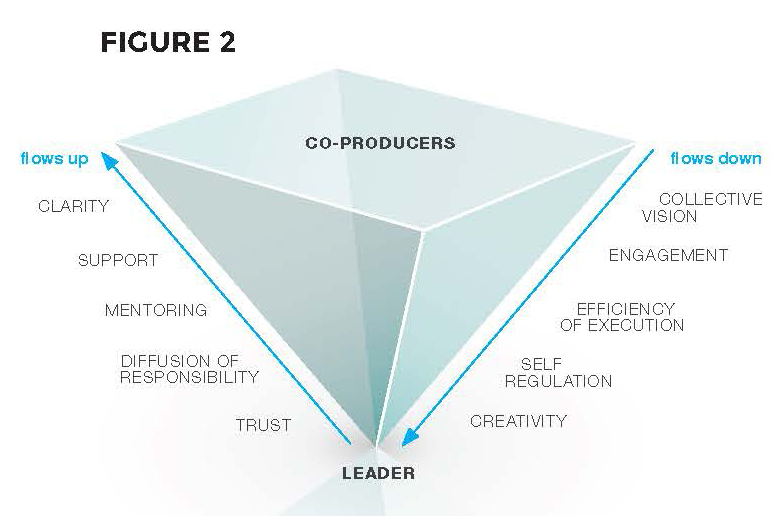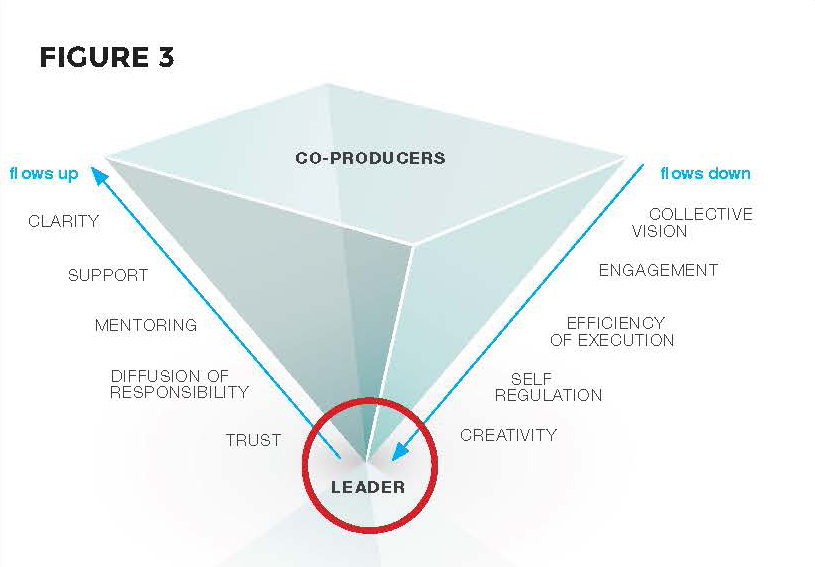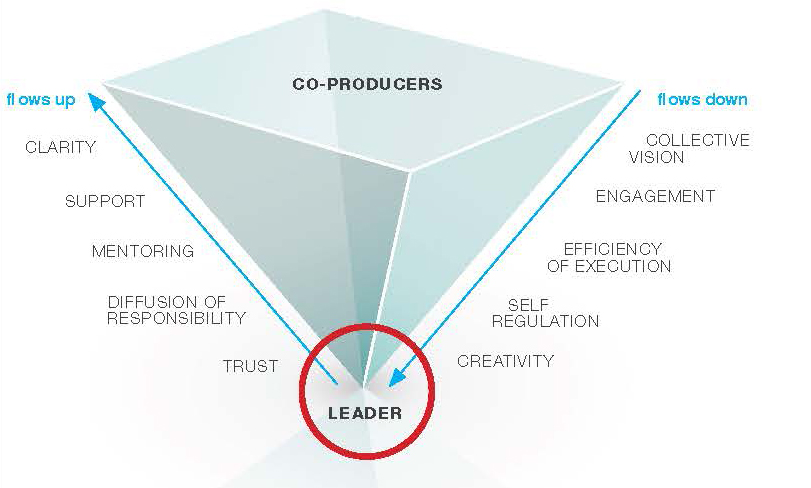By Declan Noone
Modern organisations are complex entities, a series of organisational systems designed to support the execution of a strategy. They enable organisations to make sense of both external and internal influences and factors that are impacting a business. These interact in such a way that it is increasingly challenging to appreciate the consequences of certain decisions, actions and behaviours; however, traditional leadership models still prevail across many organisations (Figure 1).

These models place the onus on the leader to maintain a high level of situational awareness across multiple areas, along with a high level of control over their employees. Leaders are expected to provide clarity and purpose, as well as assign tasks, responsibilities and resources accordingly. Success or otherwise is as a result of their ability to monitor and drive productivity. Considering the complexity of what they face from both formal and informal structures, along with rapidly evolving external factors, what is expected from leaders in this model is becoming increasingly onerous.
Consequently, leading in complex organisations is increasingly difficult and stressful, as leaders strain to understand the challenges they face and the solutions required. Therefore, organisations need to re-examine the role of leadership in their businesses.
Consideration needs to be given to moving away from the ‘power over’ dynamic of leaders and their followers, to a more ‘power to’ dynamic. The 2016 report ‘Leadership at Work: Do Australian leaders have what it takes?’ by the Centre for Workplace Leadership at the University of Melbourne, refers to the fact that ‘acts of leadership are more widely distributed’[1]in organisations, and encourages a mind-set change from seeing followers as ‘recipients’ of leadership in the traditional leadership sense, to a more progressive approach. In a progressive approach followers are viewed as ‘co-producers’ of leadership as it exists ‘in a more complex set of interactions between formally-designated leaders and their followers, and among followers working interdependently (in teams) with each other.’ (Figure 2)[2]

Essentially, an organisation is seeking to develop a diffused leadership model where the leader, at any level, creates a positive working dynamic with their co-producers that both empowers and enables them to act with greater autonomy in their day-to-day work. However, empowering co-producers to take action based on their knowledge and experience creates a number of unique challenges for a leader.
Leadership Challenges
Embracing a Changing Mind-Set
Letting go of the reins and empowering others is difficult, as moving from what you know, and are safe doing, to a new approach requires a move outside your comfort zone. In essence, you are seeking to migrate from a fixed mind-set to a growth mind-set; one that enables you to be more open, agile and adaptive.
The first step in this journey is to ‘acknowledge that you don’t have all the answers’. Adopt the ‘not-knowing’[1]mind-set and use open questions when sitting with your team of co-producers in order to elicit insights on trends, developments, and solutions from them. This will encourage:
- Mutual respect
- A willingness to share experiences and knowledge
- Greater and wider participation
- A greater diversity of opinions to be heard
- A greater feeling of added value.
The second step is to work on building trust. Get to know your co-producers better by using the Task Enabling Tool developed by Dr Jane Dutton to provide insights into how people like to work and how they work. The nature of such a conversation with each co-producer will encourage a changing mind-set as we begin to understand each other in more detail. This can be a powerful catalyst for helping both the leader and the co-producer to change their mental models of each other.
Creating a New Team Dynamic
For a team to flourish, each individual needs to appreciate how their own behaviours and performance levels impact on others. Appreciative inquiry is a powerful tool in this context and can be used to help establish agreed ways of working together. For example, when there is greater autonomy there needs to be an agreed set of practices and processes relating to communication, responsibility and accountability. Engaging in a positive and constructive conversation via appreciative inquiry achieves collective buy-in regarding how we work, how we perform, and where our responsibilities and accountability lie. Therefore, enforcement is not driven by a leader, but rather by a leader and their co-producers together.
Enhancing Resilience Levels
Certainly, at the early stages of the transition between the models shown in Figure 1 and Figure 2, there will be an increasing level of pressure placed on the leader. This is due to increasing levels of information and guidance being sought from co-producers while you change work practices.

The pressure point (circled in red) can be quite significant, and consequently, the leader needs to build an enhanced level of personal resilience. Understanding how being focused and calm, creating a greater frequency of positive emotions,having a realistic and positive perspective,developing emotional control and avoiding emotional contagion, having a greater degree of willpower, can all positively impact your emotional resilience is essential, together with developing the same means to improve your mental, physical, spiritual and social resilience. Furthermore, it’s important not to overlook that co-producers will also have increased pressures and stresses as a result of their increased responsibilities. Therefore working on enhancing personal and team resilience levels is a must.
Upskilling
To enable your leadership style to evolve and influence others in a manner that encourages your co-producers to flourish and perform, necessitates that you add new arrows to your quiver. Developing an understanding of positive psychology, behavioural science and mindfulness, and their application in your professional and personal life, is an important evolutionary step in your personal leadership development.
Through a process of positive self-development you will not only develop insights into your own capacity while building your resilience levels, but you will also develop the capacity to build an environment that enables others to achieve their potential.
You should strive to achieve an experiential learning approach towards your positive self-development. Move your learning experience from theory to practice and allow yourself the opportunity to test your new knowledge in the emotional, mental and physically demanding environment in which you work. This will enable you to grasp the value of a new skill set and the challenges you will encounter in directly applying them.
Conclusions
Creating a diffused leadership model in your workplace is not an easy transition. However, by diffusing leadership responsibilities to co-producers you afford people the opportunity to develop:
- Enhanced personal and professional skills (mastery)
- Greater levels of independence (autonomy)
- Increased levels of engagement
- Improved connectivity to work and colleagues (relatedness)
- Greater job satisfaction.
Furthermore, by diffusing workloads you create more time for leaders to become more actively engaged in strategically important projects for their organisation.
Using the skills, knowledge and experience of everyone can only enhance engagement levels and productivity, while also achieving enhanced personal and collective agility, resilience and adaptability.
[1]https://www.workplaceleadership.com.au/app/uploads/2017/04/SAL-Report.pdf, p.11
[1]http://positivemindfulleader.com/knowing-vs-not-knowing-the-battle-of-the-mind-sets/

